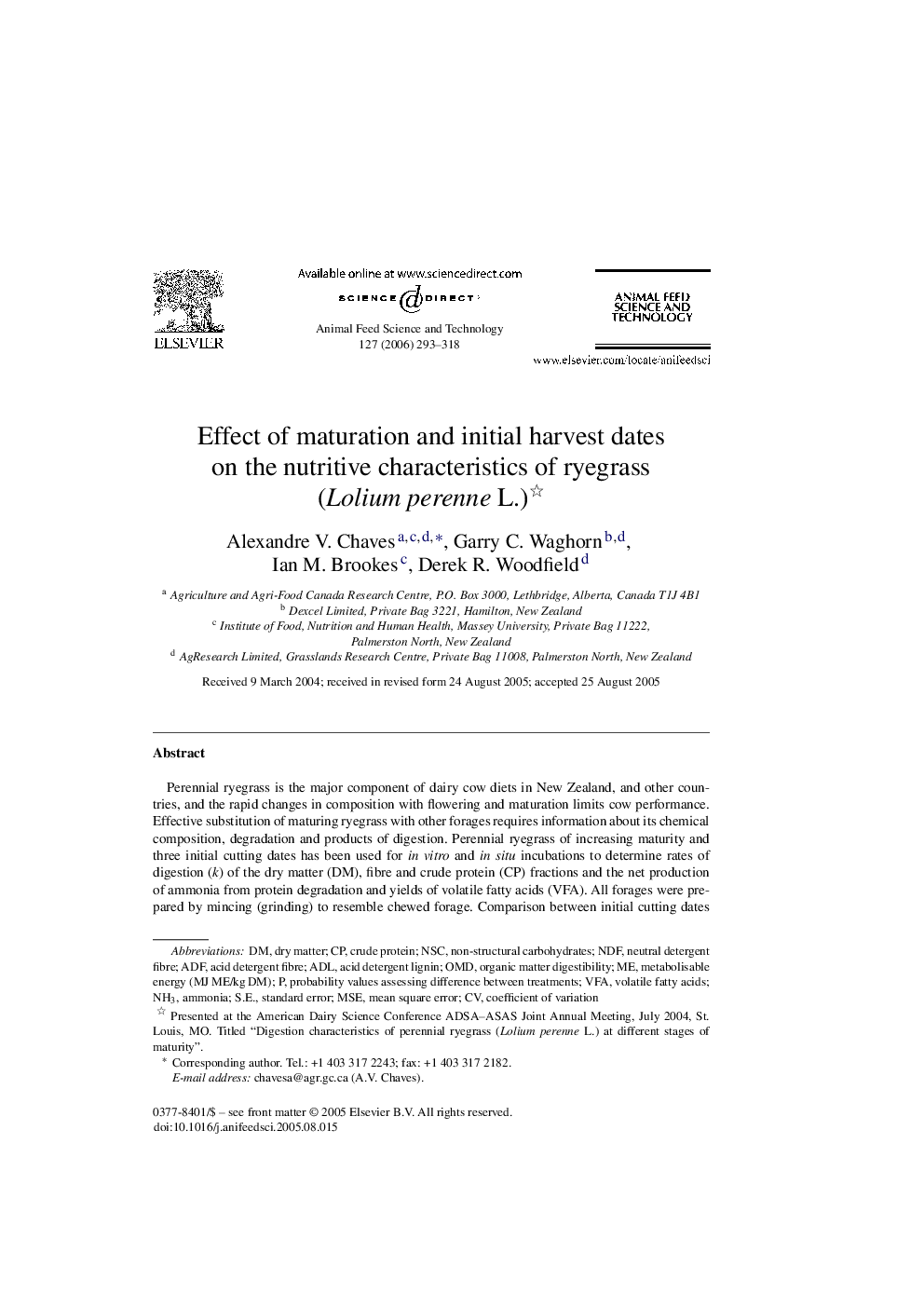| Article ID | Journal | Published Year | Pages | File Type |
|---|---|---|---|---|
| 2421237 | Animal Feed Science and Technology | 2006 | 26 Pages |
Perennial ryegrass is the major component of dairy cow diets in New Zealand, and other countries, and the rapid changes in composition with flowering and maturation limits cow performance. Effective substitution of maturing ryegrass with other forages requires information about its chemical composition, degradation and products of digestion. Perennial ryegrass of increasing maturity and three initial cutting dates has been used for in vitro and in situ incubations to determine rates of digestion (k) of the dry matter (DM), fibre and crude protein (CP) fractions and the net production of ammonia from protein degradation and yields of volatile fatty acids (VFA). All forages were prepared by mincing (grinding) to resemble chewed forage. Comparison between initial cutting dates had minor effects on the rate of change in chemical composition. Fibre degradation rate was halved as ryegrass matured (k = 0.14–0.03 h−1), whereas CP degradation was unaffected (k = 0.12 ± 0.08 h−1). The ammonia production in vitro was a function of grass CP content, extent of release into the soluble (A) fraction and microbial utilisation. One effect of maturation was a brief period of ammonia surplus followed by insufficiency for microbial growth, but the rate and amounts of volatile fatty acids (VFA) produced were not affected by forage CP content or ammonia concentration. Maturation had little effect on proportions of VFA.
